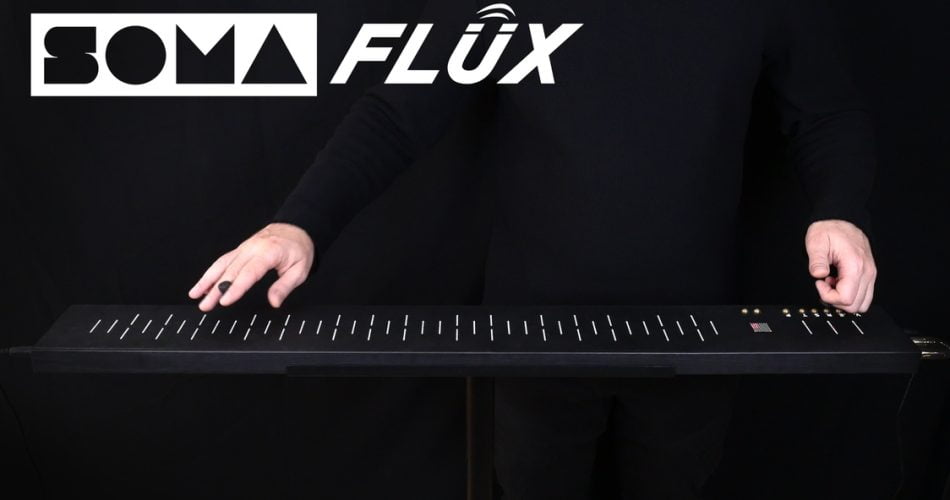SOMA Laboratory has announced the formal launch of a high-end, professional synthesizer with unparalleled expressive possibilities.
FLUX, whose name connotates continuous, infinite movement, has been under development for one year. The synth combines the musicality and expression of classical instruments, while harnessing the power of modern technology within a purpose-built and revolutionary user interface.
FLUX pays homage to Leo Theremin’s Thereminvox instrument in that the user is able to control the sound by simply using hand motions in the air – but FLUX is based on magnetic principles rather than relying on the capacitive coupling of hands and antennae to generate sound.
For this, the musician holds a magnetic bow in each hand, and a multipolar magnetic sensor is used to register the user’s hand positions and movements: the X coordinate of the artist’s right-hand bow controls the pitch, and the Z coordinate controls volume. Meantime, the left-hand bow’s X, Y and Z coordinates control the various synthesis parameters.
FLUX: harnessing future art
FLUX’s unique motion-based interface provides musical artists with an all-new medium of expression. Since a magnet has two poles, FLUX not only detects the bow’s spatial coordinates, but also its angle. This means that flipping the right-hand bow on the Y-axis changes the octave, allowing a range of six continuous octaves – without transposing the keyboard. With transposition, artists can achieve a range of sub-bass all the way to ultrasonic. The left-right tilting of the right-hand bow on the X-axis controls two independent modulation parameters.
Meanwhile, the left-hand bow controls the timbres: the sensor has six poles, and independently registers positive and negative magnetic fields. This lets the user change which parameters are controlled by flipping the bow, enabling control of up to twelve independent sound parameters. Together with the pitch, volume and two additional tilt parameters on the right-hand bow, users have immediate access to a total of sixteen sonic controls that can be used during performance, without ever touching the surface of the instrument.
FLUX: A modern instrument for academic music
With FLUX, artists can play large number of synthesis parameters in a musical way, allowing immediate creation of a dynamic timbral composition. In the future, different synthesis algorithms (engines) will be created as complete musical instruments for direct timbral control, and all engines will be available in a single firmware update. Specially designed presets will allow the user to save and recall the entire state of the synth, including engine and all tunings.
FLUX’s digital to analog converters are designed in-house by SOMA, and the instrument works in monophonic, duophonic and polyphonic modes. Staccato-enabling and quantisation modes are available, and FLUX features a stable, even, and clearly marked note scale – making it easier to learn and to intone cleanly than on a theremin. The instrument’s synthesis is DSP-based and is features high-end special effects.
SOMA Laboratory developed FLUX as a modern instrument for academic music, offering powerful sonic tools such as distortion, and complex FM and physical modelling of non-existent, surrealistic musical instruments. FLUX represents a completely new medium through which modern performers and composers can express their work.
FLUX will be shipping later this year and pricing is to be announced.
More information: SOMA Laboratory



